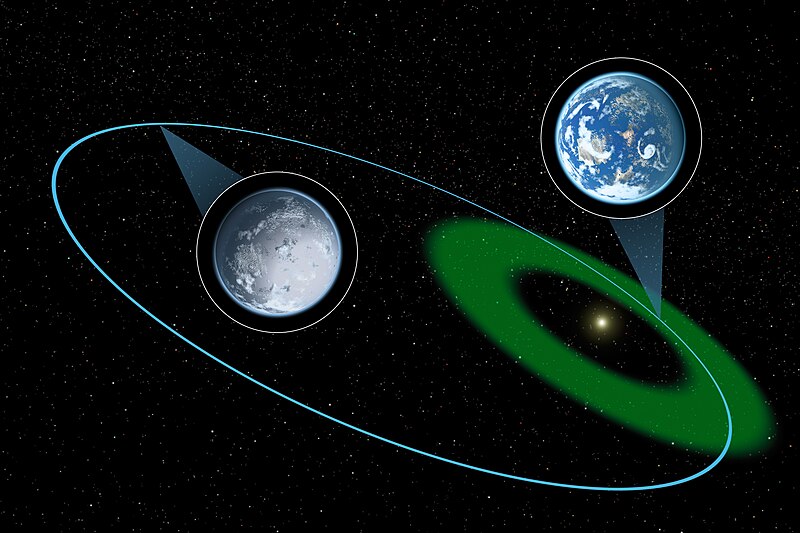Ficheiro:Eccentric Habitable Zones.jpg

Dimensões desta antevisão: 800 × 533 píxeis. Outras resoluções: 320 × 213 píxeis | 640 × 427 píxeis | 1 024 × 683 píxeis | 1 280 × 853 píxeis | 2 560 × 1 707 píxeis | 3 600 × 2 400 píxeis.
Imagem numa resolução maior (3 600 × 2 400 píxeis, tamanho: 657 kB, tipo MIME: image/jpeg)
Histórico do ficheiro
Clique uma data e hora para ver o ficheiro tal como ele se encontrava nessa altura.
| Data e hora | Miniatura | Dimensões | Utilizador | Comentário | |
|---|---|---|---|---|---|
| atual | 13h02min de 13 de setembro de 2012 |  | 3 600 × 2 400 (657 kB) | ComputerHotline | {{Information |Description={{en|While Earth and the other planets in our solar system travel around the sun in near-circular orbits, planets in other systems can have more comet-like orbits in which the distance from the planet to star varies. Such orb... |
Utilização local do ficheiro
A seguinte página usa este ficheiro:
Utilização global do ficheiro
As seguintes wikis usam este ficheiro:
- de.wikipedia.org
- en.wikipedia.org
- eu.wikipedia.org
- fi.wikibooks.org
- he.wikipedia.org
- it.wikipedia.org
- ja.wikipedia.org
- lb.wikipedia.org
- ru.wikipedia.org
- tr.wikipedia.org


